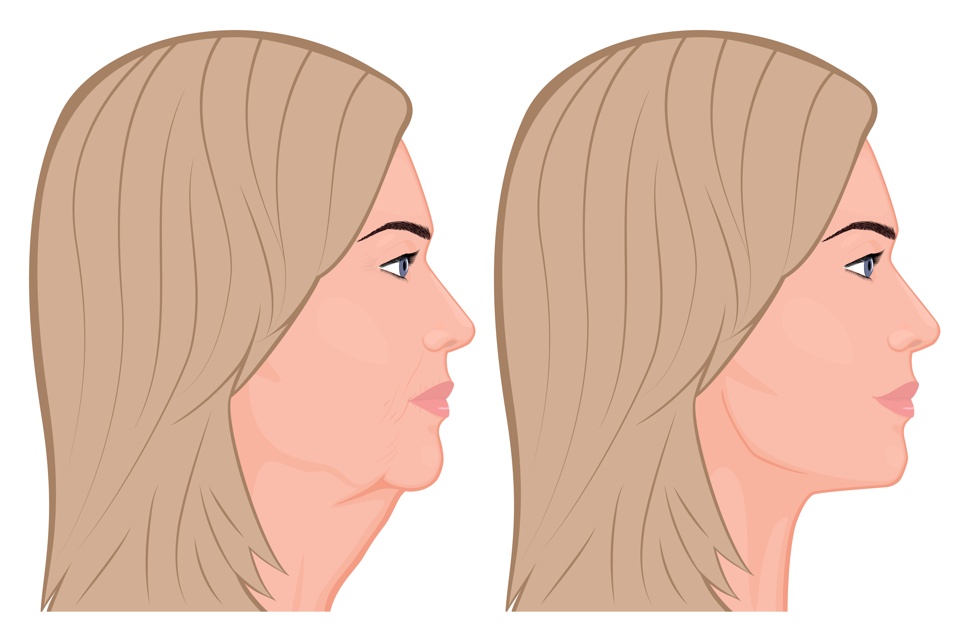Jawline Reduction Plastic Surgery
Published on: 29 Nov 2019, 11:40 a.m.
Mr Debashis Ghosh
NHS Consultant
GMC Number: 4657664

Medically reviewed by a licensed NHS consultant
Last updated: 15/08/2019Get Free & Simple Pricing, Procedure & After Care Information from a Licensed Consultant Now

Photo credit: Aksanaku / Shutterstock
Table of Contents:
- What is jawline surgery?
- Why get jawline surgery?
- What does the procedure entail?
- The results
- How long does it take?
- What are the side effects?
- What are the risks?
- What is the recovery time?
- Ways to improve your jawline without surgery
What is jawline surgery?
Jawline plastic surgery is a procedure which is carried out under general anaesthetic, where a medical practitioner uses a micro-saw or laser-saw to shave away parts of the bone – and in some cases muscles – in order to reshape and refine an area. plastic surgery to define jawline.This bone shaving procedure is also used to reshape the feet and shoulders too.
To find out exactly what the procedure entails, read this guide to bone shaving cosmetic surgery (and to find out other alternative options).
Why get jawline surgery?
There are several medical reasons why someone would consider getting jawline bone shaving surgery, such as treating a jawline deformity or an over or under-bite, which can affect anything from speech to chewing. By getting jawline surgery, this can all be alleviated.
More recently the procedure – also known as a ‘facial contouring’ procedure – has become increasingly popular, especially with those in Korea. This procedure aims to treat patients who have an oval-shaped jawline, as well as incorporating chin and cheek implants to completely change the shape of the natural face.
Bone shaving surgery is sometimes used to reshape the feet and shoulders too. This is often done to help treat joints (such as knees and hips) to alleviate symptoms of arthritis, as well as treating bunions on feet.

Photo credit: Jade ThaiCatwalk / Shutterstock
What does the procedure entail?
The procedure takes place under general anaesthetic, which means that you are totally asleep and unaware of what is going on. Depending on the area being treated and the desired look, doctors use a variety of implements from a scalpel to create an incision into the skin, to laser saws, micro-saws and manual osteotomes (similar to a chisel) to shave the bone down.
The surgery includes:
- Making an incision inside the mouth between the gum and the cheek next to the jaw.
- Using an implement, such as a microsaw or laser, the medical practitioner will carve out a desired jawline and create a well-defined look.
- The incisions are then closed with dissolvable stitches.
The results
To get an idea of what the results your surgeon can create, it is a good idea to ask your surgeon to provide some jawline plastic surgery before and after pictures. Often if you ask this, your surgeon will be able to refer you to some past patients to get an unbiased opinion of the procedure.
The images below give a clear idea of the type of result you can expect from jawline reduction surgery:

Photo credit: Aksanaku / Shutterstock
How long does the procedure take?
More often than not, the procedure takes around an hour from start to finish. However, it is worth noting that the jawline surgery procedure can take anywhere up to five hours to be complete, depending on the area and how big the job is.
What are the side effects of jawline surgery?
Just like any surgery, there are several risks involved. Some side effects of jawline surgery include the following:
- Blood clotting
- Numbness around the jaw and mouth
- Infection if hygiene isn’t maintained
- Facial paralysis
- Seromas on the face
- A hematoma
What are the risks of jawline surgery?
When performing jawline plastic surgery, potential complications include injury to the inferior alveolar nerve, which provides permanent numbness and damage to the lower lip and even death.
Another possible complication is if the mentalis muscles (jaw muscles) fail to reattach, which can lead to the chin and lower lip sagging, causing permanent damage to the patient’s face.
What is the recovery time?
Usually within three to six months, all post-surgery symptoms dissipate. Some of the most common symptoms include:
- Haematoma
- Infection
- Sensory deficit
However, if you have asymmetry or require over- or under-correction of the mandibular bone, it may take longer than three to six months.
It is worth noting that if you have soft tissue or thick skin, you may want to consider an additional lifting procedure whilst you are having the jawline cosmetic surgery, as there is a high chance of getting sagging soft tissue – age and skin elasticity also plays a part too.
How to improve jawline without surgery
There are other alternatives to going under the knife, to reduce the number of risks. Some of the popular alternative ways to improve your jawline without surgery include:
- Dermal filler
For chins and jawlines, fillers can be used to enhance a chin in terms of length, projection and width as well as enhance the jawline angle. Jawline, chins and noses are three of the most common cosmetic treatments that have replaced classic bone shaving treatments.
This option is not permanent like jawline surgery, but they are a great alternative if you don’t want an abrasive procedure. They are long lasting and can last up-to two years and are reversible.
(Photo credit for male getting dermal fillers: Jade ThaiCatwalk / Shutterstock)
- Ultherapy
Ultherapy is a nonsurgical ultrasound therapy which is used to kick-start collagen production and tighten skin in the face. It uses focused pulsing heat energy to lift and tighten saggy skin on the face and neck, whilst improving the appearance of lines and wrinkles.
- CoolSculpt
CoolSculpting is a nonsurgical cooling technique used to reduce fat in targeted areas, such as the jawline. Essentially, this procedure freezes and kills fat cells in the jaw that cannot be removed through diet and exercise.
- Kybella
Kybella is a nonsurgical injection technique used to reduce excess fat beneath the chin, and only takes around 15 to 20 minutes to complete. The treatment helps to destroy fat cells in the jaw by using a synthetic form of deoxycholic acid.
- Jawline exercises
Often the front neck muscles are underdeveloped, inhibited and almost never exercised. Therefore, doing exercises are a great way to strengthen the muscles that attach from the sternum and collar bone (clavicle), to various parts of the jawline (mandible).
The following jawline exercises can help to sharpen the jawline, but also prevent neck pain, headaches and jaw pain:
- Neck curl up
- Collar bone backup
- Tongue twister
- Vowel sounds
- Chin up
(Photo credit for jawline exercises: Lemurik / Shutterstock)